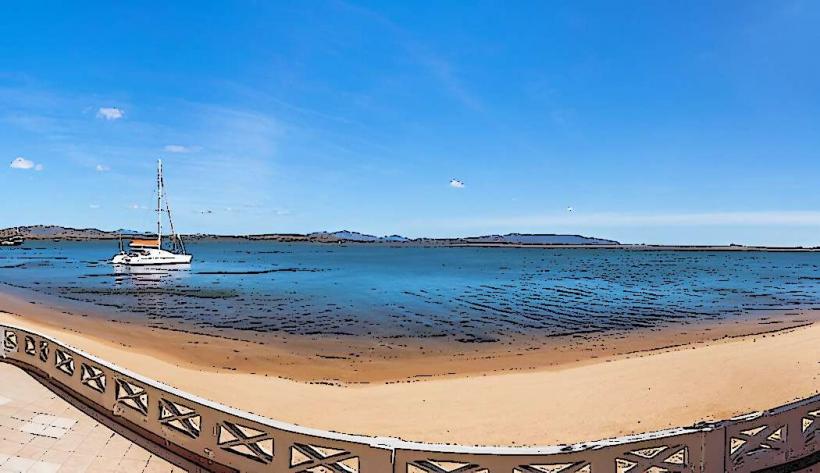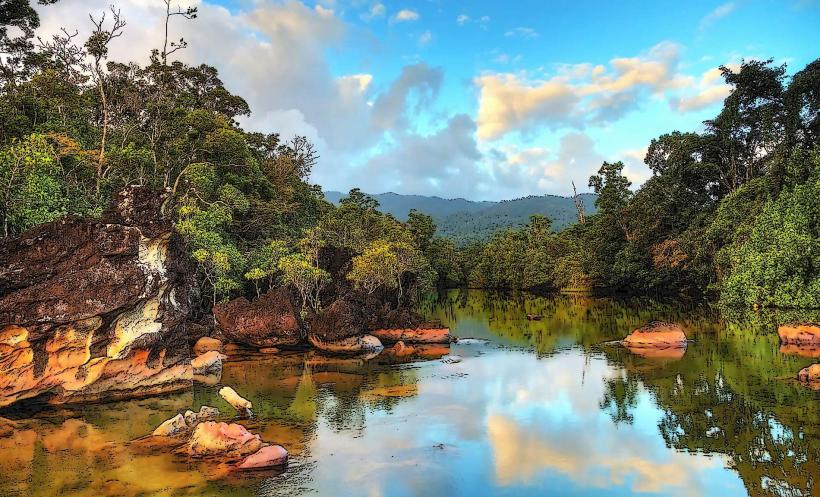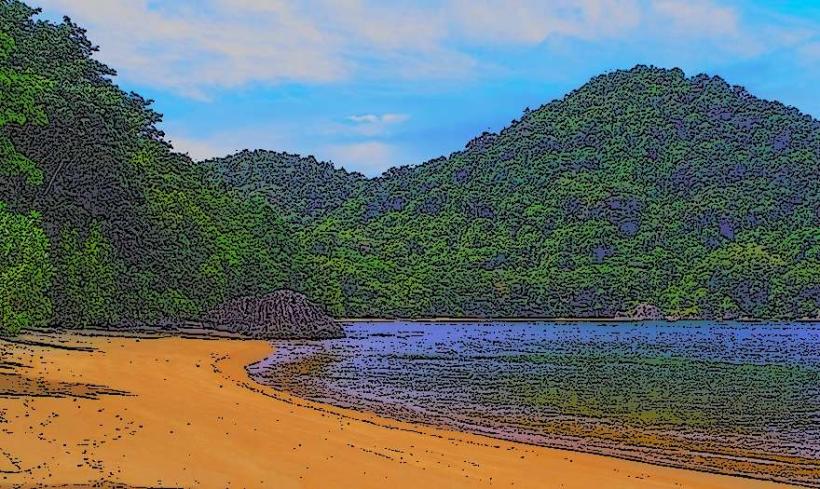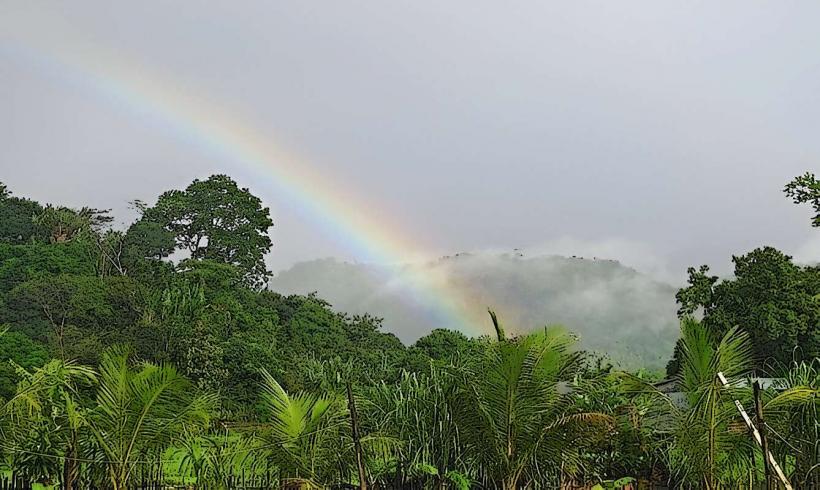Information
Landmark: Cape VohémarCity: Vohemar
Country: Madagascar
Continent: Africa
Cape Vohémar is a prominent geographical feature located on the northeastern coast of Madagascar, in the Sava Region. It is part of the Vohémar Bay and lies near the town of Vohémar, which is a key coastal settlement in the region. This cape is a significant landmark due to its natural beauty, rich biodiversity, and strategic location along Madagascar’s coastline. Here’s a detailed look at Cape Vohémar:
1. Geography and Location:
Cape Vohémar is located on the northeastern tip of Madagascar, near the town of Vohémar. The cape forms part of the Indian Ocean coastline and is situated near Vohémar Bay, a bay known for its scenic views and proximity to both marine and terrestrial ecosystems. The region is characterized by coastal cliffs, beaches, and lush tropical forests that border the Indian Ocean.
- Proximity to Town: Cape Vohémar is just a short distance from the town of Vohémar, which serves as a hub for trade and commerce in the Sava Region.
- Surrounding Environment: The cape is surrounded by the pristine natural beauty of northeastern Madagascar, with its rainforests, coastal ecosystems, and marine environments that are home to a wide variety of endemic species.
2. Ecological and Environmental Significance:
Cape Vohémar, like much of the northeastern coastline of Madagascar, is rich in biodiversity, both in its terrestrial and marine ecosystems. It plays a key role in the conservation of the region’s unique species and habitats.
Coastal Ecosystems: The cape’s shoreline is home to coral reefs, mangroves, and beaches, which provide essential habitats for marine life. The region is rich in marine biodiversity, with various species of fish, sea turtles, and marine mammals.
Tropical Forests and Wildlife: The hinterland surrounding Cape Vohémar is part of Madagascar’s rainforest ecosystems, which are home to a variety of endemic plant and animal species. Notable wildlife in the region includes several species of lemurs, birds, reptiles, and amphibians, many of which are found nowhere else on Earth.
Marine Protected Areas: The region near Cape Vohémar, including Vohémar Bay, is considered part of important marine protected areas that help safeguard the local marine environment from overfishing and other environmental pressures.
3. Cultural and Historical Significance:
While Cape Vohémar is primarily known for its natural beauty, it also holds cultural and historical significance in the context of the local Malagasy communities.
Local Communities: The region around Cape Vohémar is home to indigenous Malagasy communities, many of whom rely on agriculture, fishing, and craftsmanship for their livelihoods. These communities have a rich cultural heritage and maintain traditional practices that have been passed down through generations.
Historical Importance: The area has played a role in the maritime history of Madagascar. The proximity of the cape to the Indian Ocean has made it an important location for trade and maritime activity. Historically, the region may have been a point of contact for traders and explorers navigating the Indian Ocean routes.
4. Tourism and Activities:
Cape Vohémar is not as developed as some of the more popular tourist destinations in Madagascar, but it offers opportunities for eco-tourism and adventure travel. Visitors can explore the region’s pristine natural environments and experience local Malagasy culture.
Wildlife Watching: The area is a great spot for wildlife enthusiasts who want to observe Madagascar’s endemic species in their natural habitats. Visitors may have the chance to see black-and-white ruffed lemurs, chameleons, and various bird species that inhabit the nearby forests.
Beach and Coastal Exploration: Cape Vohémar is surrounded by beautiful beaches, perfect for swimming, relaxation, and exploration. The clear waters and marine life make it a good location for snorkeling and scuba diving.
Hiking and Nature Walks: The tropical forests surrounding Cape Vohémar provide excellent opportunities for hiking and trekking, with trails that lead through lush greenery and offer views of the coast and surrounding landscapes.
Cultural Experiences: Visitors to the area can also engage with the local Malagasy communities, learn about traditional farming practices, and explore the local crafts, such as weaving and carving, which are common in the region.
5. Conservation Efforts:
Cape Vohémar, like much of the northeastern coast of Madagascar, faces environmental challenges such as deforestation, overfishing, and climate change. However, efforts are underway to protect and preserve the region's unique ecosystems:
Marine Conservation: The area is part of Madagascar’s network of marine protected areas, which aim to safeguard the region’s coral reefs, coastal ecosystems, and marine species. These efforts include sustainable fishing practices and protection against illegal fishing activities.
Forest Conservation: The rainforests surrounding Cape Vohémar are critical for the conservation of Madagascar’s biodiversity. Efforts are made to protect the forests from logging and land conversion, ensuring that the habitats of species like lemurs and chameleons remain intact.
Eco-Tourism Development: By promoting sustainable tourism, the region aims to balance economic development with environmental preservation. Responsible tourism practices help raise awareness of the importance of conservation in protecting the area’s natural resources.
6. Best Time to Visit:
The best time to visit Cape Vohémar is during the dry season, from April to November, when the weather is more favorable for outdoor activities such as hiking, wildlife watching, and exploring the coast. The wet season (from December to March) can bring heavy rains, which may make travel more difficult, especially in remote areas.
Conclusion:
Cape Vohémar is a stunning and ecologically significant area on the northeastern coast of Madagascar. It offers a unique combination of natural beauty, biodiversity, and cultural heritage, making it an important destination for eco-tourism and conservation efforts. With its pristine beaches, lush forests, and diverse wildlife, Cape Vohémar provides an opportunity to experience some of Madagascar’s most unique and unspoiled landscapes. Whether for adventure travel, wildlife watching, or cultural immersion, the cape offers visitors a chance to explore one of the island’s most remarkable coastal regions.






